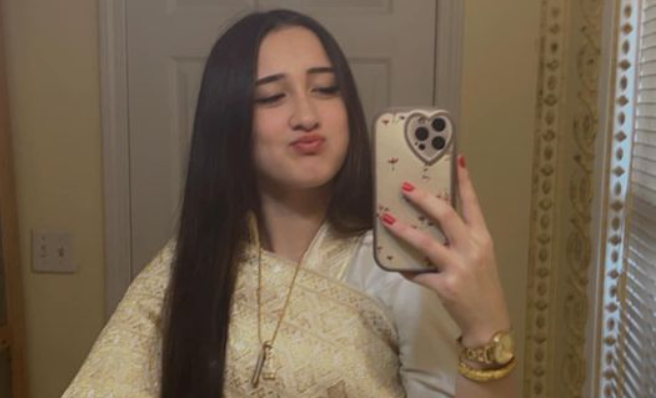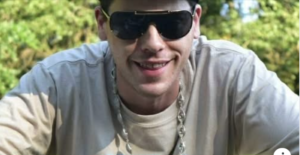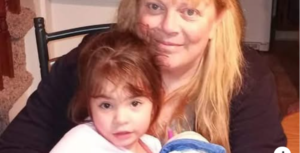On a quiet Wednesday morning, September 4, 2024, Apalachee High School in Winder, Georgia, would become the latest name etched into the devastating history of school shootings in the United States. A day that began like any other with students heading to class, would end in horror, leaving four dead and nine injured in a mass shooting that has shocked the community. One of the survivors, Lyela Sayarath, a junior at Apalachee High, was sitting right next to the suspected gunman, 14-year-old Colt Gray, moments before he carried out the deadly rampage. Lyela’s first-hand account offers a haunting glimpse into the moments leading up to the shooting and the harrowing aftermath as the school descended into chaos and tragedy.
It was just before 9:45 a.m., and students in the Algebra 1 classroom were settling into their routine. Lyela, like many others in the room, was unaware that this ordinary day would soon take a dark turn. She was seated next to Colt Gray, a student she described as quiet and reserved. Colt rarely spoke, often responding with one-word answers during group work, and had always seemed shy and distant. There had never been any obvious signs that he was troubled or capable of the violence that was about to unfold.
When Colt got up and left the classroom at the beginning of the lesson, Lyela assumed he was going to the bathroom. However, she noticed something unusual—he didn’t take a hall pass, which was required for students to leave the room. This minor detail caught her attention, but not enough to raise any immediate alarm. Like many students might, she assumed he was simply skipping class.
As time passed, the class carried on without much thought about Colt’s absence. Algebra 1 was just another routine part of the school day for Lyela and her peers. Then, toward the end of the period, something strange happened. The teacher, who was standing at the front of the classroom, received a message over the school’s loudspeaker. The announcement instructed the teacher to check her email immediately, something that was out of the ordinary during class hours. There was a moment of stillness as the teacher followed the instructions. Unbeknownst to Lyela and the others, this was a warning—a sign that something terrible was already in motion elsewhere in the school.
It was just a matter of minutes before Colt Gray reappeared outside their classroom door. But this time, something was terribly wrong. The door to the classroom was shut, as it locked automatically when closed, a standard security measure in many schools. Colt, standing on the other side, knocked or indicated that he wanted to be let in. One of the girls in the class instinctively walked toward the door to open it, but as soon as she glanced outside, she recoiled in horror. The expression on her face and her sudden movement backward was all the confirmation Lyela needed—Colt was holding a gun.
What happened next unfolded in a series of terrifying seconds that would feel like an eternity for those trapped inside. According to Lyela, when Colt realized that no one was going to open the door for him, he turned toward the classroom next to theirs. The door to that room was open. And that’s when the shooting began.
The sound of gunfire filled the hallway, echoing through the school’s corridors. Lyela described the shots as “one after another,” a rapid and relentless barrage that sent students into panic. Inside her own classroom, fear took hold. She and her classmates did the only thing they could think of—hide. Students dropped to the floor, crouching behind desks and piling on top of one another in a desperate attempt to stay out of sight. The teacher, acting quickly, turned off the lights, plunging the room into darkness in an effort to make it less visible to anyone who might come inside. Desks were pushed in front of them, creating a makeshift barricade. But there was little comfort in their hiding place. The only thing they could hear was the horrifying sound of gunfire from the adjacent classroom, where Colt was shooting indiscriminately.
For Lyela, those moments were a blur of fear and confusion. She couldn’t see what was happening in the next room, but she knew her friend was in there. The uncertainty gnawed at her as she and the others huddled together in silence, their hearts pounding in their chests. Every second felt like it could be their last.
Lyela’s friend, who had been sitting in the classroom where Colt began shooting, survived, but he was forever changed by the trauma he witnessed. When she saw him after the attack, he was “pretty shaken up,” she said. He had seen someone get shot. He was covered in blood, not his own, and was limping from what appeared to be an injury. His face was etched with terror, and the horror of what he had witnessed was clear in his eyes. Lyela’s friend had seen the violence up close, and the image of that moment would be burned into his memory forever.
As the shooting continued, law enforcement rushed to the scene. The Barrow County Sheriff’s Office had received reports of an active shooter around 9:30 a.m., shortly before Colt Gray had returned to the classroom armed with his weapon. Officers responded swiftly, entering the school to confront the shooter and prevent further bloodshed. However, by the time they reached him, the damage had already been done. Four people were dead, and nine others were wounded.
Among the dead were two students and two teachers. One of the victims, Mason Schermerhorn, was a student with autism who had been well-liked by his peers and teachers. His death sent shockwaves through the community, as did the loss of the two beloved teachers. Their identities have not yet been fully released, but their impact on the school community was profound, and their deaths left a deep void in the hearts of students and staff alike.
The nine injured included students and faculty members who were caught in the line of fire. Some were critically wounded, while others suffered less severe injuries. One of the injured was a special education math teacher, David Phenix, who had been shot in the hip and foot. He was rushed to the hospital, where he underwent emergency surgery. Though his injuries were life-altering, he survived—a small glimmer of hope on an otherwise tragic day.
As the investigation into the shooting began, attention turned to Colt Gray, the 14-year-old student who had carried out the attack. Those who knew him described him as quiet, introverted, and largely withdrawn. He had never been the type to cause trouble, and there were no obvious signs that he was struggling with any serious issues. But as authorities began to piece together the events leading up to the shooting, a darker picture began to emerge. Colt had been harboring anger and resentment, though the exact reasons for his violent outburst remained unclear.
Lyela’s description of Colt aligned with what others had said about him—he was a boy who kept to himself, rarely engaging with others unless absolutely necessary. In their group projects, he had always been quiet, offering little more than one-word responses when asked to contribute. Yet, despite his reticence, no one could have predicted that he was capable of such violence. The Colt that Lyela knew was shy and withdrawn, not the kind of person who would carry a gun into school and take the lives of his classmates and teachers.
In the aftermath of the shooting, Apalachee High School and the surrounding community were left reeling. Parents rushed to the school, desperate for information about their children. The reunification process was chaotic, with law enforcement and school officials working to account for every student and ensure that families were informed about what had happened. For many, the wait was agonizing, as rumors and incomplete information swirled. The fear that their child might be among the dead or injured was overwhelming.
Sheriff Jud Smith, in a press conference later that day, called the shooting an “act of evil” and vowed that the investigation would be thorough and exhaustive. He confirmed that Colt Gray had been taken into custody alive and would face multiple charges of murder. The initial confusion about whether the suspect had been neutralized was clarified—Colt had been apprehended without further incident, but the devastation he left in his wake was undeniable.
In the days following the shooting, the community of Winder, Georgia, began to mourn the lives lost and grapple with the trauma that had been inflicted upon their children. Candlelight vigils were held in honor of the victims, and the outpouring of grief was palpable. Students who had survived the attack, like Lyela, were left to process the horrors they had witnessed and the realization that their lives had been forever changed.
For Lyela, the memory of sitting beside Colt Gray in those final moments before he unleashed his deadly attack is something she will carry with her for the rest of her life. In that moment, he was just another student—a quiet boy who she thought had skipped class. But within minutes, he had become something else entirely—a gunman whose actions would leave an indelible scar on Apalachee High School.
The investigation into the shooting would go on for months, as law enforcement worked to understand what had driven Colt to commit such an atrocity.



